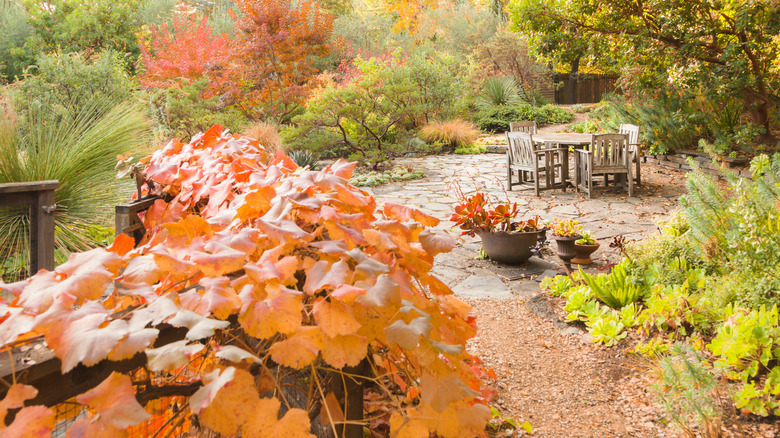La Niña Is About To Have A Major Impact On Your Fall Garden Plans
When you spend half a G per year on gardening, you want your hard-earned money to go as far as possible. (That's about the average of what Americans spend annually on this rewarding pastime.) This year's Old Farmer's Almanac prediction for the winter has backup from meteorologists; late 2025 has a high chance of La Niña-influenced weather patterns. But what does this mean for your flower beds and vegetable patch?
Typically, La Niña is known to usher in cooler weather in the north and warmer in the south, but it's not always as black-and-white as this general explanation. This fall and early winter, this climate phenomenon is slated to push above average temperatures much farther north than usual. Unfortunately, one common characteristic of La Niña that we're likely to see in 2025 is drought in southern portions of the country.
While abnormally warm temperatures in late fall and early winter in most parts of the country could push when to expect the first frost of 2025, extreme drought in others could force you to modify your water-saving methods. Yet, it's not all heat and drought; areas of the Pacific Northwest, coastal Alaska, and a good chunk of Florida may see more precipitation than the norm.
La Niña's bringing the heat
Knowing that you have some unusual weather on the horizon can help you prepare your garden for what's in store. The prolonged warmth could be a welcome extension of the growing season. Now might be the time to dose up your fall-harvest vegetable plants with fertilizer to give them a jolt of energy for an extra-large crop (as long as the weather isn't too hot). If planting more fall vegetables intrigues you, pick up some seeds for plants well-suited for a fall vegetable garden, like radishes, beets, and kale.
If you live in the south, an extension on summer may also bring temperatures that jeopardize your plants. Giving your growing things some protection with row covers or by putting up a hoop house to prevent damage. Tuck some mulch around your plants, since it helps regulate soil temperature along with fighting weeds and retaining moisture.
Too much or too little water may be on its way
La Niña has the potential to affect rain and snowfall significantly this fall, but it's not all bad news for American gardeners. A good portion of the Pacific Northwest as well as many other areas have been in drought in 2025 – the hope of abundant rain could be encouragement enough to do some fall planting that you might've been wary of doing in the summer. But for wetter areas like Florida or Alaska's southern coast, you can protect your plants from root rot and other issues associated with water overdoses. Start by making sure your soil is well-draining by adding compost or physically breaking up compacted soil. If a real deluge is on its way, you can mound up or trench the soil in your beds to direct surplus water away from roots.
However, with a frightening chunk of the country already experiencing some level of drought this year, the threat of more can break a gardener's heart. If your area is expected to be particularly dry, water conservation is a must. Water in the morning before the heat of the day sets in, and give your garden a substantial drink weekly rather than more frequent, short waterings. Hold precious moisture in with mulch or row covers. Be ready for future rainfall shortages by planting drought-tolerant plants this fall.


